Your Beginner’s Guide to Fishing in Florida
When it comes to spending time in wild Florida, there are many different flavors of adventure. You can hike, you can bike, you can swim, you can paddle – and you can fish! Between lakes, rivers, beaches, and piers, there are nearly endless spots to cast a line. It doesn’t even matter if you catch anything (well, maybe it matters a little…). The fun is in the journey, and there are so many journeys to be had when it comes to fishing in Florida.
Words by Sara Sheehy
Live Wildly Lead Adventurist
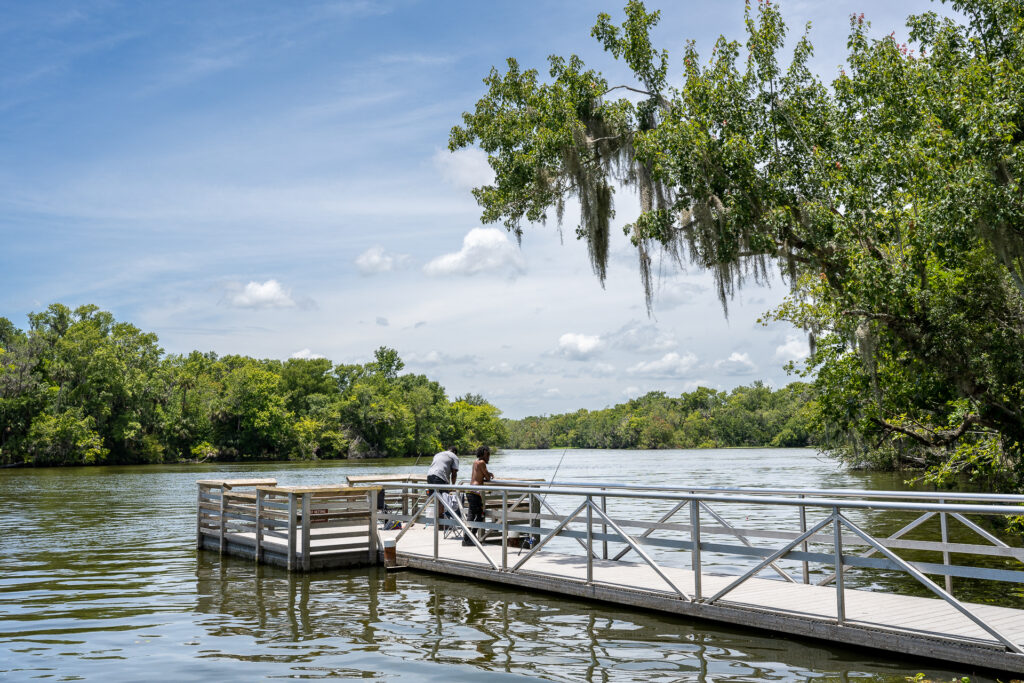 Photo by Sara Sheehy/Live Wildly
Photo by Sara Sheehy/Live Wildly
We don’t proclaim to be fishing experts, but we’ve learned a thing or two over the years about fishing in this wild and beautiful state. And maybe the beginner’s mind is where you’re at, too? If so, let’s dive into all things fishing in Florida.
Types of Fishing in Florida
Inland and Freshwater Fishing
In Florida’s interior, away from or adjacent to the coast, you’ll find plentiful lakes, rivers, and natural springs that are home to all sorts of freshwater fish. Favorites to try to catch include largemouth bass, bluegill, catfish, and, in south Florida, the extra colorful peacock bass.
Fun fact: Peacock bass are not native to Florida but were introduced by the Florida Fish and Wildlife Commission to control populations of other unwanted species.
Each water body has its own species and character for fishing, but when we’re talking about inland waters, you’re most likely going to fish from land, a dock, a small boat, or a kayak.
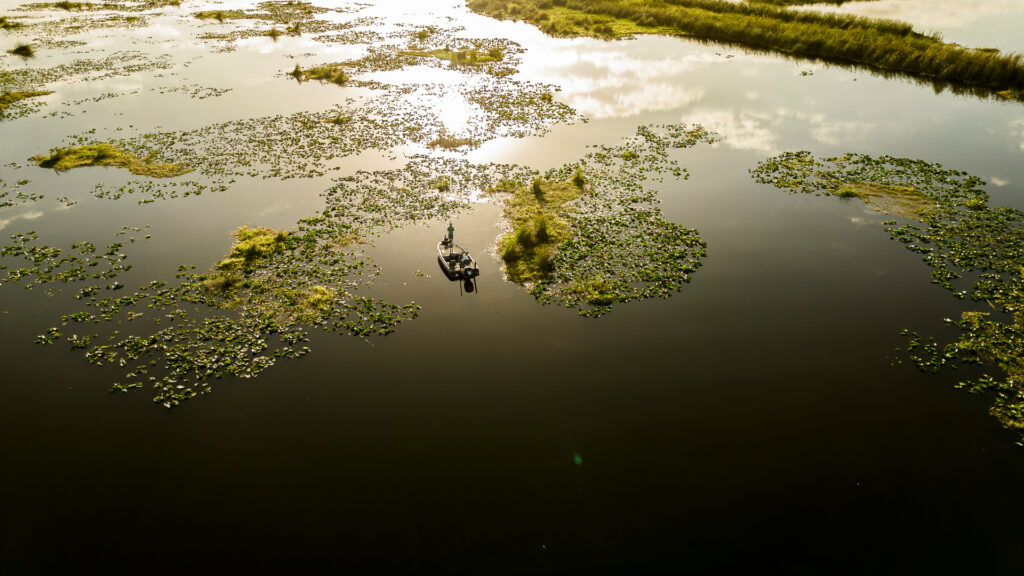
Intracoastal Waterway Fishing
The Intracoastal Waterway runs along Florida’s Atlantic and Gulf coasts. Much of the Intracoastal is saltwater, although you’ll also find pockets of brackish water, where saltwater and freshwater mix. Some of Florida’s most sought-after fishing is in the Intracoastal, where you can cast for snook, redfish, sea trout, tarpon, sheepshead, and mangrove snapper, among other species.
Many people fish from a boat in the Intracoastal, but you can also find spots to fish from shore or a pier.
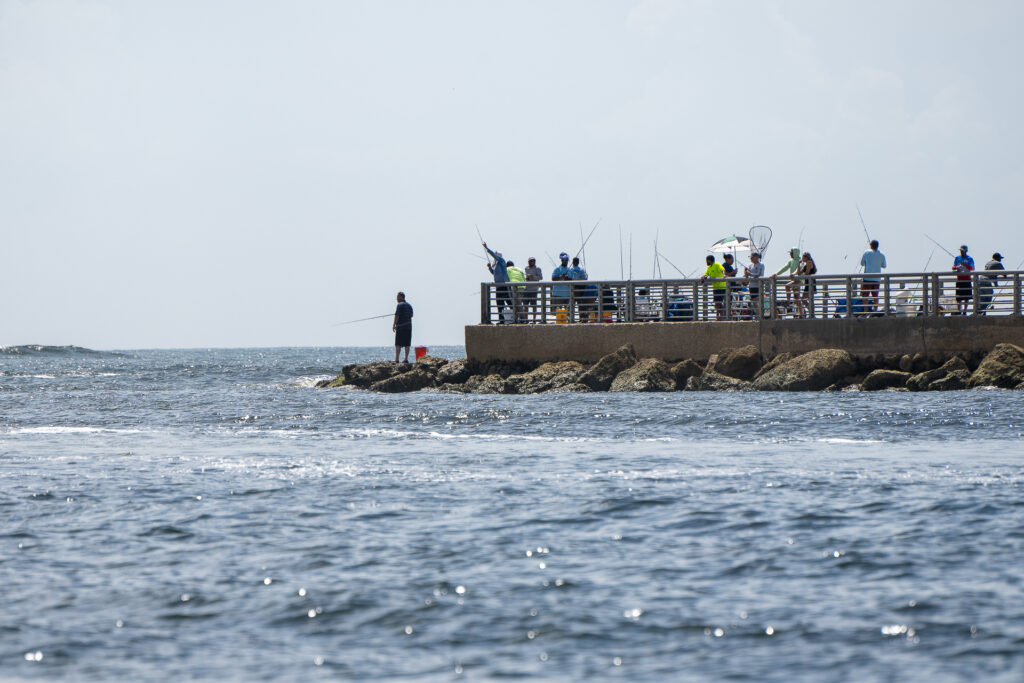 Photo by Sara Sheehy/Live Wildly
Photo by Sara Sheehy/Live Wildly
Coastal Fishing: Surf Fishing and Piers
Florida’s 825 miles of sandy beaches and dozens of public piers give easy access to the ocean. You can catch fish like pompano, whiting, Spanish mackerel, redfish, flounder, and sometimes even tarpon. Many beaches and piers are open to the public. You don’t need a boat, just fishing gear and a sense of adventure.
“Snook are particularly active in the summers and like to be close to coastal shores during this time, so it’s great fishing for them,” shares Halle, Live Wildly’s project manager and an avid angler.
Deep Sea Fishing
Deep sea fishing takes place far offshore in deeper waters. It’s an option if you want to try fishing for larger species and love being out on the open water.
When you’re just starting, you’ll definitely want to experience deep sea fishing in Florida with a fishing guide or trusted friend. We won’t cover deep sea fishing in this article, but there are plenty of fishing guides out there to help you out if this is your dream!
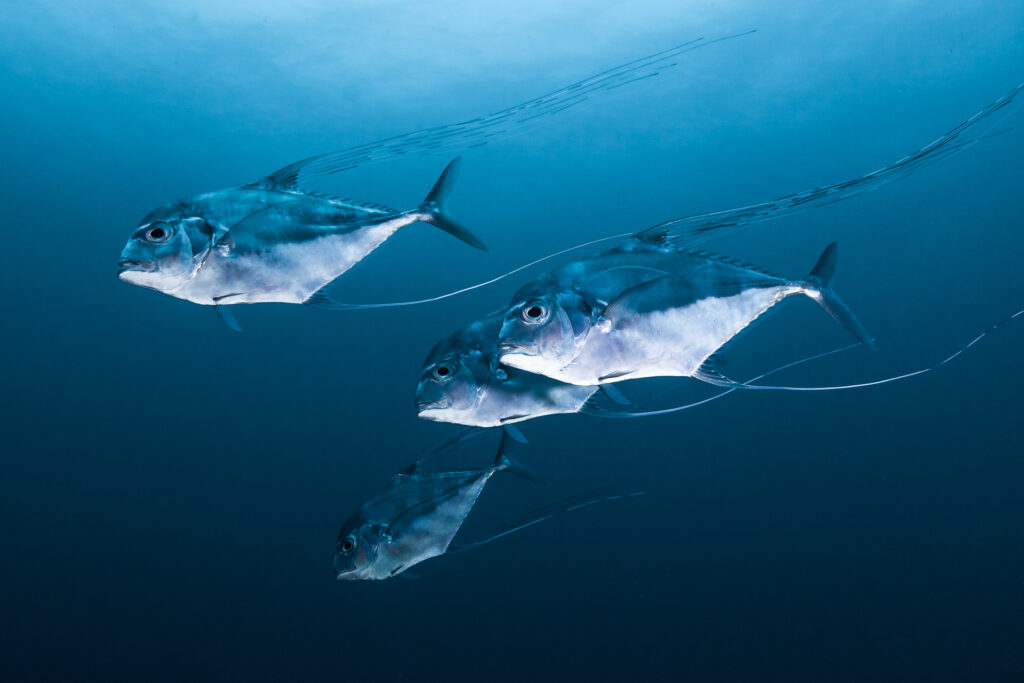 Photo by Tandem Stills + Motion
Photo by Tandem Stills + Motion
Getting Started with Fishing in Florida
Fishing in Florida is suitable for both beginners and experienced anglers. If you’re just starting out, here’s what you need to know to begin.
ICYMI: What is an “angler?” An angler is a type of fisherman who uses a rod and reel to catch one fish at a time. “Fisherman” is a more general term that includes anglers, but also commercial fishermen, net fishermen, trappers, etc.
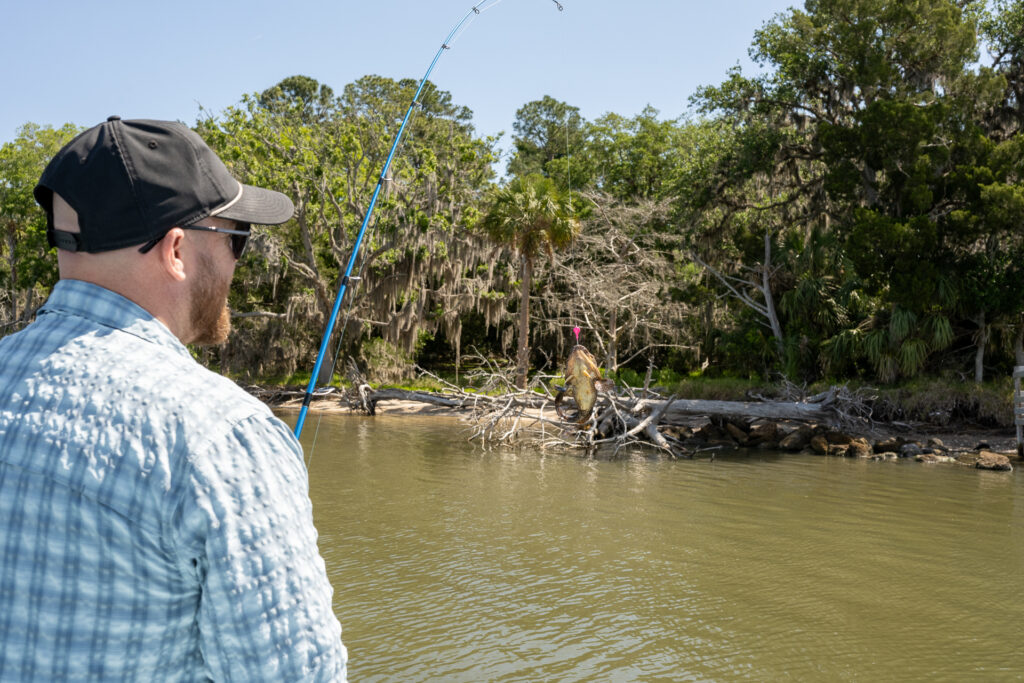 Photo by Sara Sheehy/Live Wildly
Photo by Sara Sheehy/Live Wildly
Essential Gear for a Beginner Angler
You do not need fancy equipment. Start with:
Fishing rod and reel: A spinning combo is easy to use. Shoreline and pier fishing are best with a medium or long rod. Start your research with this Fishing Reels 101 explainer from Florida Sportsman as well as this First Time Angler resource from the Florida Fish and Wildlife Conservation Commission.
Line and tackle: Use monofilament line and a basic tackle box with hooks, sinkers, and lures. Salt-resistant tackle works best on the coast and in the Intracoastal, where the water is either salty or brackish.
Check out this quick YouTube video on how to tie a uni knot – a versatile knot for fishing!
Bait: Worms and minnows work well in freshwater. Try shrimp, cut bait, or artificial lures for saltwater and the ocean.
Personal gear: Bring sunscreen, sunglasses, a hat, and pliers for hooks. On the beach, a sand spike helps hold your rod. On the pier or in a boat, a bucket or cooler is useful for your catch.
Fish handling knowledge: Once you catch a fish…what do you do next?! Proper handling of a fish is important for the health and safety of the fish (and you), especially when you catch-and-release. Take a bit of time to learn proper fish handling techniques before you head out.
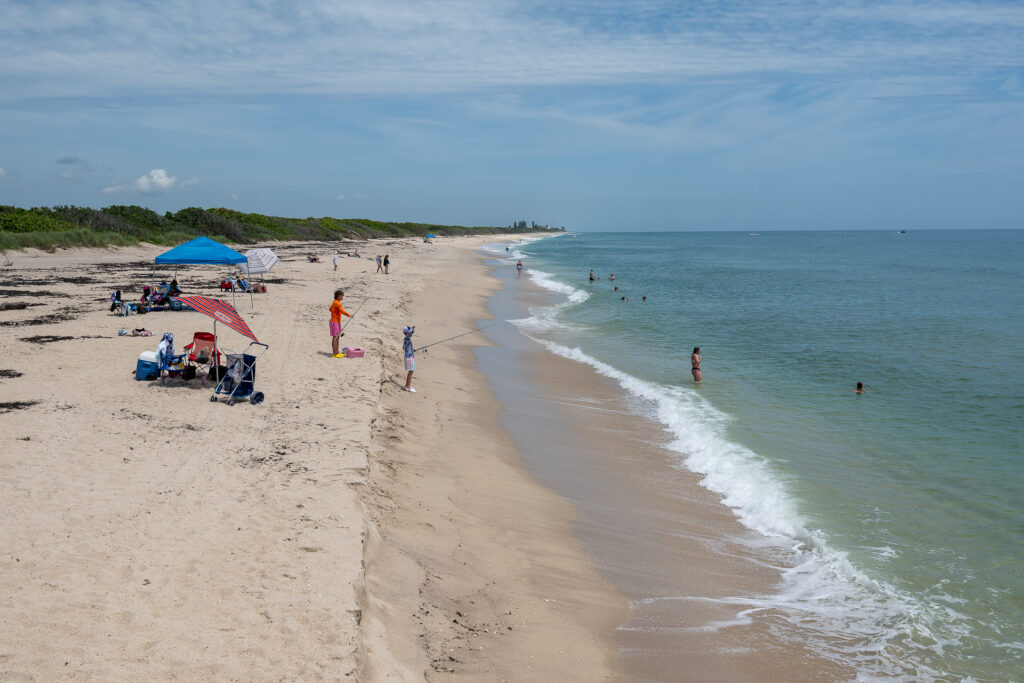 Photo by Sara Sheehy/Live Wildly
Photo by Sara Sheehy/Live Wildly
Licenses and Regulations
In Florida, most people ages 16–64 need a fishing license. They are easy to pick up online from the Florida Fish and Wildlife Conservation Commission. You can purchase them for a single day, a series of days, or the entire year. Be sure to grab the right one – Florida has different licenses for freshwater and saltwater fishing.
Did you know that recreational fishing brings over $8.3 billion into the Florida economy each year? Wow!
This next part seems a little complicated, but stick with me. In addition to a fishing license, there are fishing regulations that govern what you can catch-and-keep, and what you must catch-and-release, in Florida waterbodies. Here is your reference guide to freshwater fishing regulations and saltwater fishing regulations.
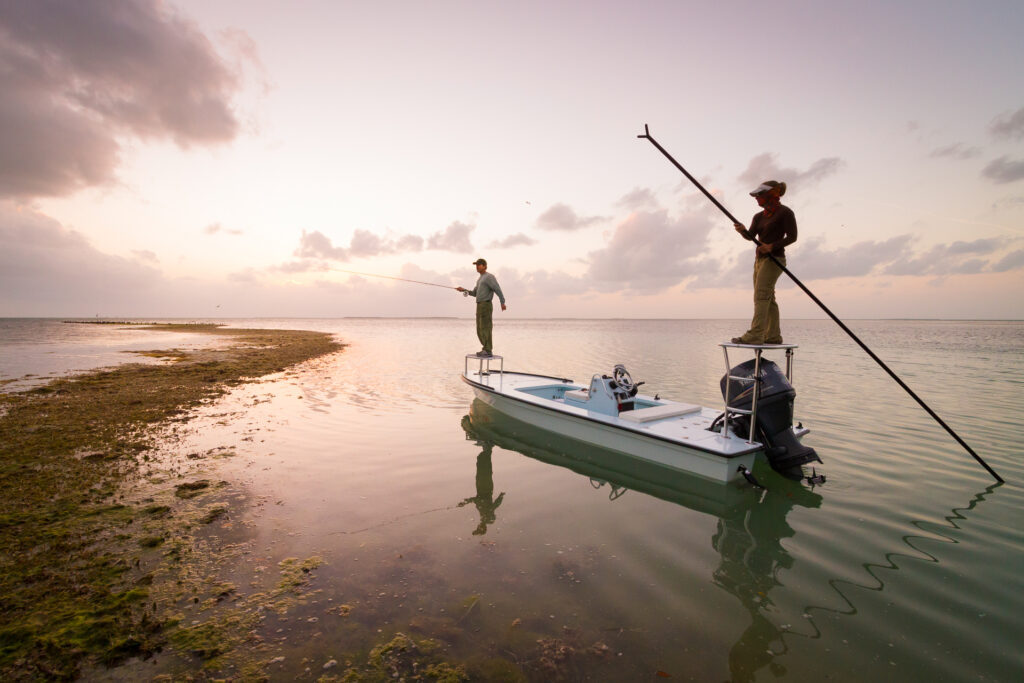 Photo by Tandem Stills + Motion
Photo by Tandem Stills + Motion
DIY vs. Guided Fishing in Florida
Should you teach yourself to fish or hire a guide? Well, there are pros and cons to each.
DIY Fishing in Florida
Fishing alone or with a friend allows you to try things at your own pace. It’s cheaper – you just need your gear and license. Many piers, beaches, and rivers are free or don’t cost much to access. You pick when and where to go.
DIY fishing is best if you like doing research, enjoy experimentation, or have a small budget. Sometimes it takes practice to choose a good spot or learn about the fish, so be patient. At the end of the day, remember that it’s all about time spent on a new hobby in one of the most beautiful places on Earth.
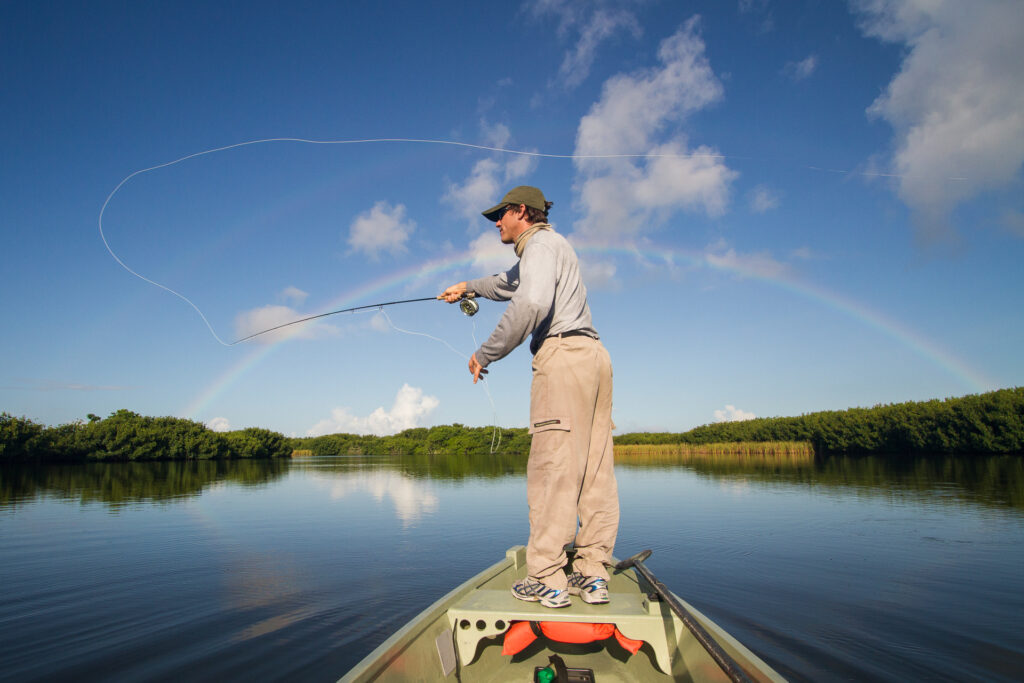 Photo by Tandem Stills + Motion
Photo by Tandem Stills + Motion
Guided Fishing Trips in Florida
Fishing with a guide will jump-start your fishing in Florida adventure. Guides know the best places, bring the necessary gear, and teach the basics of casting. A guide is best if you prefer to learn from someone else rather than through experimentation, want to catch a specific fish, or want to try a new location that seems out of reach by yourself.
Guided trips can be pricey, but they will get you fishing with the least amount of effort.
Choose what fits your personality and budget best. The big thing is to get outside and try fishing.
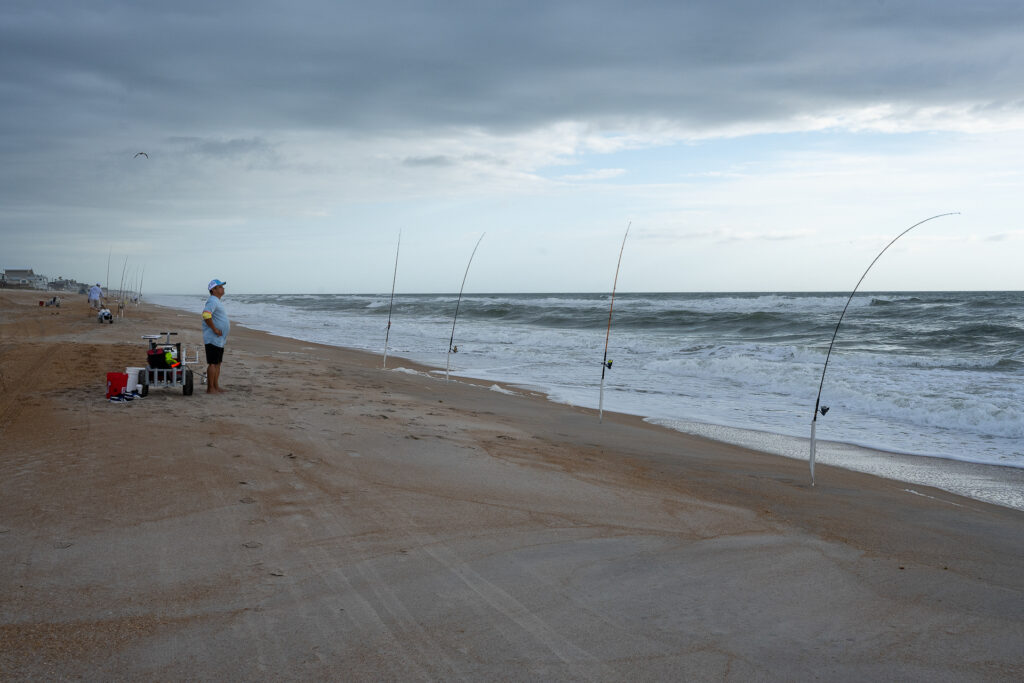 Photo by Sara Sheehy/Live Wildly
Photo by Sara Sheehy/Live Wildly
Top Beginner-Friendly Fishing Spots in Florida
After you have your gear and license, you need to pick a fishing spot. This is the fun part! When you’re just starting out, it’s best to pick a fishing spot with easy access and maybe even some other anglers around for you to observe and chat with (if they seem game – some people love fishing as a solitary sport!).
Here are a handful of easy places for beginners, from the Panhandle to south Florida:
1. Fort Pierce Jetty Park, Fort Pierce
This spot is at a cut where the Intracoastal empties out into the Atlantic Ocean. You can fish for snook, snapper, and jack. The nearby beaches are also good for pompano and whiting.
2. Lake Tohopekaliga, Kissimmee
Lake Toho is known for its easy access and lots of fish. Beginners can catch largemouth bass, crappie, and bluegill. There is some fishing from shore, but this spot is more popular for fishing boats. Guide services are available, most from nearby Orlando.
3. Navarre Beach Fishing Pier, Navarre
This is the longest pier in the Panhandle. At this beginner-friendly spot, you can fish for king mackerel, redfish, and pompano.
4. Sebastian Fishing Museum and Public Pier, Sebastian
You can fish for mangrove snapper and redfish from the pier. The nearby beaches let you try for Spanish mackerel or flounder.
5. Lake Kissimmee, Osceola County
This big lake is good for largemouth bass and bluegill. There are boat rentals if you want to go farther from shore.
6. Tomoka State Park, Ormond Beach
This park has both saltwater and freshwater fishing. Try fishing from the riverbank, beach, or a kayak.
Download the Florida State Park Fishing Guide
7. Bahia Honda State Park, Florida Keys
Fish from a bridge or the shore. You might catch snapper, tarpon, or bonefish. There are nature trails and plenty spots to explore.
8. Cocoa Beach Pier, Cocoa Beach
This popular pier lets you try for whiting, pompano, and sometimes tarpon. You don’t need a boat—just walk out, cast, and enjoy.
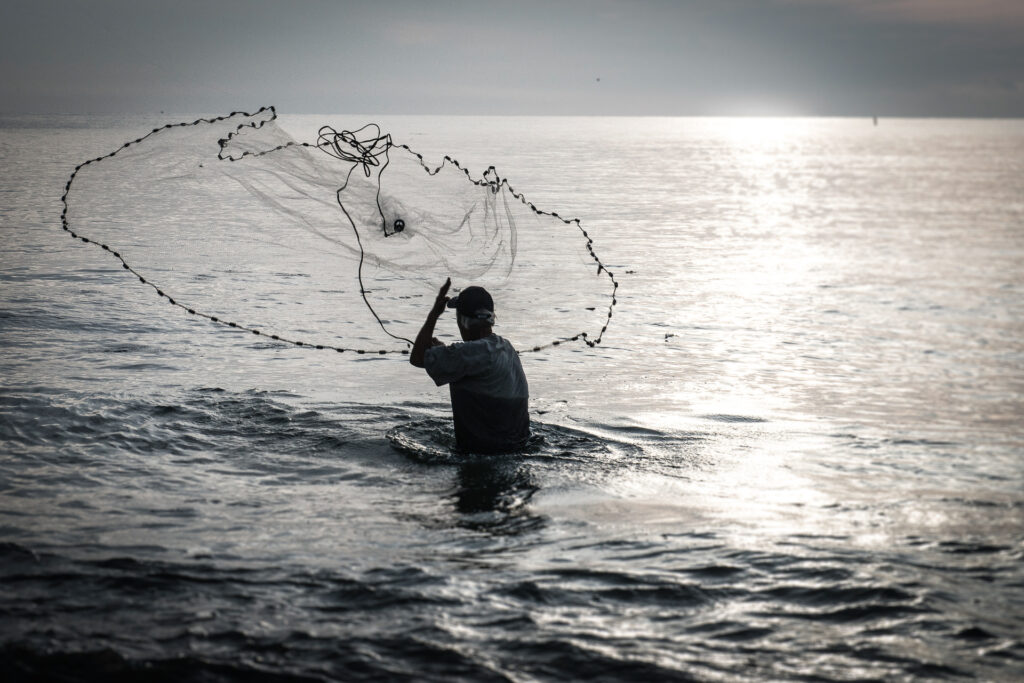 Photo by Tandem Stills + Motion
Photo by Tandem Stills + Motion
Fishing in Florida is more than just catching fish. It’s a way to spend time in nature, relax, and discover new places. With the right gear and a license, you’re ready to try Florida’s lakes, rivers, ocean, and beaches. You might fish by yourself on a quiet river or with others on a busy pier. Every trip helps you learn and enjoy Florida’s wild side.
Start small, have fun, and you might find yourself loving this new way to explore wild Florida. Happy fishing!

